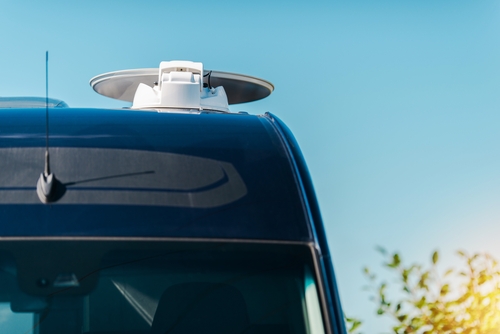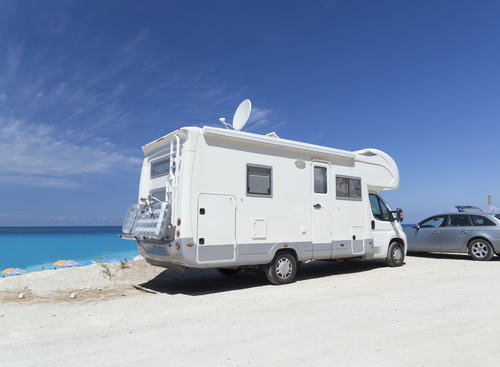There was a time when watching television while riding in a recreational vehicle was unheard of. Being out on the road meant doing away with the entertainment comforts of home. Luckily, RVers today don’t have to make such a compromise. With satellite antennas, you don’t have to miss the live broadcast of your favorite team’s big game even when you’re camping out in the woods.
Choosing an RV satellite antenna
Many kinds of antennas are being sold today, but they don’t have the same capabilities in terms of picking up signals and giving you the images and sounds that you want. A rundown of the features you should be looking for when shopping for an antenna can help you make a purchase decision you won’t regret later.

1. Receiver compatibility
Not every antenna on the market is compatible with available receivers, and a mismatched pair will display an error code on the screen instead of an image. The receiver is the device that converts the digital signal coming from the satellite into a format that’s viewable on a television.
Because compatibility differs between models, take note of manufacturer’s specifications when you’re checking out tv antennas for your camper. Some receivers also have added functionalities like parental lock-out and video recording. Most satellite antenna installations allow up to four receiver connections; however, a single installation is sufficient for most RVs.
2. Your Location
When buying a satellite antenna, you have to take your location into account. The strength of satellite signals isn’t the same for all areas, and this influences channel reception. Signal strength can be affected by obstructions such as tall buildings, trees, and weather.
If you’re planning to go on a road trip or stay in a camping site for weeks, find out first if the channel you want has strong coverage in that particular area. A simple way to do this is to use an online tool that lets you input a zip code or an address, and gives you a list of networks that can be accessed.
The tool also categorizes available signals as strong, moderate, or weak. If the results show that your desired channel’s signal is strong, you’re good to go. Otherwise, you might need to buy additional hardware like a strength meter or booster, to get a good reception.
3. Portability
When you subscribe with a satellite TV provider, you’re likely to get a free antenna; however, these models are meant to be installed at one place and not moved around. For your RV, you’re going to need something that’s lighter in weight, easy to move around, and simple to install.
There’s a wide variety of portable antennas being marketed these days, but for your recreational vehicle, look for these features:
- Automatic tracking. Choose an antenna that tracks a satellite by itself. This is essential if you want to continue receiving signals even while on the road. Imagine if you have to manually aim your antenna to get the best reception every time you want to use it. This situation won’t only be time-consuming but also very frustrating.
- Multiple TV support. This functionality applies if you have more than one TV set in your RV. In this case, opt for an antenna that can split a satellite signal and transmit it to several receivers.
4. Form
Portable antennas are more suitable for RV use. They usually come in 2 forms: domed and open.
- Domed antennas are antennas that have round-shaped covers. The biggest benefit of this kind of antenna is that you can continue to use it while driving, as the cover provides ample protection from the wind and other elements that can interfere with the signal. However, its compatibility with other digital signals is limited. If you choose a domed antenna, make sure that the signal it receives is consistent with that of your selected provider.
- Open antennas have no issues with compatibility, as they work with any digital signal. Unlike the domed antenna, though, it has no protective cover; thus, it’s more exposed to the elements. As a precautionary measure against damaging your open antenna, you have to store it away for safekeeping before driving.
5. Installation
There are many ways to put up an antenna, even on an RV’s limited space. You will need cables, connectors and the appropriate mount. Some brands make it more convenient for users by supplying an assembly kit together with the purchase.
The antenna and the hardware needed for setup will depend on your viewing needs. For a single, standard installation, only a single cable will be required. But then, if you want to add a recording function, you’ll have to make use of another cable.
Some antennas will be more complicated to install than others. Whatever mode you choose, always follow instructions to the letter. If you take shortcuts, you might end up with an antenna that’s not working as it should. Worse, you may have to call in a technician and spend more money.
During those times when you’re spending some leisurely time in your RV, away from the hustle and bustle of the urban lifestyle, you need not be entirely unplugged and disconnected. A fully functioning satellite antenna will keep you updated on what’s going on with the world outside and will keep you entertained at the same time.
Related Posts












